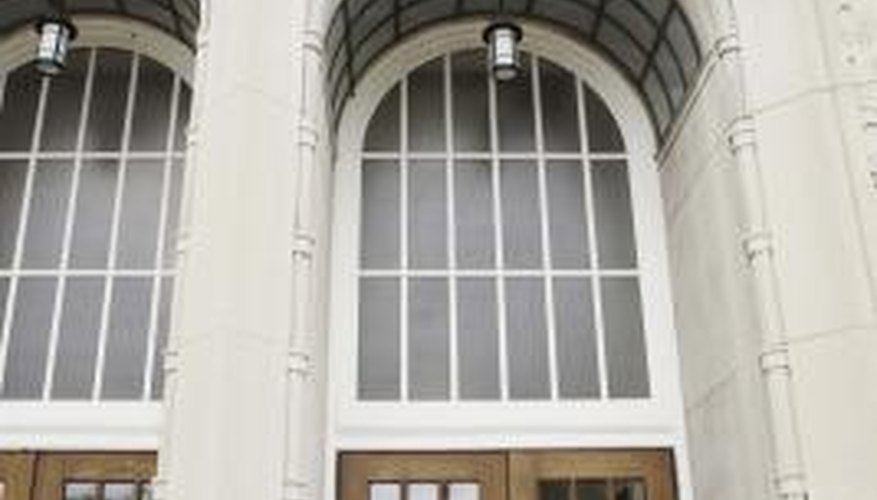Schools are affected by the general economy in a variety of different, yet overlapping ways. This makes state school funding a perennial source of public contention, because there are competing and sometimes antagonistic interests involved. Some basic economic factors affecting schools are technological cost escalation, changing comparable professional pay scales, tax base variations, tax base fluctuations and the economics of students' homes.
Technological Cost Escalation
The introduction and rapid spread of communications technology has transformed the entire society. Technology began as an advantage and grew into a necessity in an ever more wired society. Schools have been caught in this current, and with each new generation of technology, the pressure to adopt the latest generation of technology has added considerable costs to public education. Competitive pressure in and between schools has accelerated this cost escalation.
- The introduction and rapid spread of communications technology has transformed the entire society.
- Competitive pressure in and between schools has accelerated this cost escalation.
Comparable Professional Pay
Comparable worth is a concept that is controversial with regard to teachers, some arguing that teachers are underpaid compared to professionals with equivalent training and responsibilities, and other arguing that teachers are paid equitably in this comparison. What is not controversial is that as teachers see opportunities outside of education that pay better, they will move into those other fields. The increasing professionalisation of the teaching profession has had -- and will continue to have -- a powerful economic effect on education.
Tax Base Variation
School systems in the United States are typically run by districts. A variable portion of the school's funding is through the appropriation of property taxes in that district. Inequalities of wealth between districts, then, translate into inequalities of funding for schools in different districts. This has been a controversial practice for decades, not only because of school inequality, but because many property owners who do not themselves have schoolchildren resent paying for schools at all.
- School systems in the United States are typically run by districts.
- Inequalities of wealth between districts, then, translate into inequalities of funding for schools in different districts.
Tax Base Fluctuation
In 2008, the general economy entered an epochal crisis, and as a result spending decreased, unemployment increased, and tax revenues fell dramatically. State budgets, which provide a substantial portion of state school funding, found themselves in deep deficits. This intensified the competitive claims on the state's resources, and schools were and are targeted for funding cuts. However one feels about questions of state revenue apportionment, there is no doubt that tax base fluctuations directly affect schools.
- In 2008, the general economy entered an epochal crisis, and as a result spending decreased, unemployment increased, and tax revenues fell dramatically.
- This intensified the competitive claims on the state's resources, and schools were and are targeted for funding cuts.
Economics of the Home
The advantages of relative affluence and the disadvantages of poverty in the students' home play out in the classroom. Statistical data show consistent correlations between poverty in the home and lowered attendance, lower motivation to learn, lack of readiness for school, and behavioural problems traceable to stressful home environments. Learning disabilities are higher in poor households. Moreover, the experience of school for poor children is often unpleasant, because the awareness of difference in social status among the students themselves is high.
- The advantages of relative affluence and the disadvantages of poverty in the students' home play out in the classroom.
- Moreover, the experience of school for poor children is often unpleasant, because the awareness of difference in social status among the students themselves is high.
